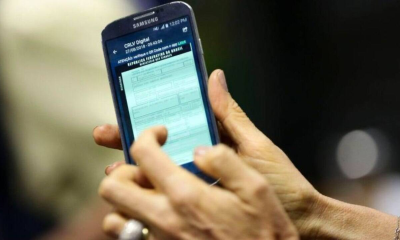Sustainable Urban Mobility: Electric Motorcycles in Cities
Sustainable urban mobility is becoming increasingly important as cities continue to grow and face challenges related to traffic congestion, air pollution, and climate change. One potential solution to these issues is the use of electric motorcycles in cities. These vehicles offer a sustainable and efficient mode of transportation that can help reduce emissions and improve mobility.

Electric motorcycles are powered by rechargeable batteries and produce zero emissions, making them an environmentally friendly alternative to traditional gasoline-powered motorcycles. They are also quieter and more efficient, allowing for easier navigation through congested city streets. In addition, electric motorcycles can be charged at home or at public charging stations, making them a convenient option for urban commuters.
Overall, the use of electric motorcycles in cities has the potential to revolutionize sustainable urban mobility. As cities continue to face challenges related to traffic congestion and air pollution, it is important to explore innovative solutions like this that can help improve mobility while also protecting the environment.
The Role of Electric Motorcycles in Urban Mobility
Electric motorcycles are becoming an increasingly popular mode of transportation in cities, offering a sustainable and efficient alternative to traditional gasoline-powered vehicles. In this section, we will explore the benefits of electric motorcycles in urban mobility, as well as the challenges and considerations associated with their use.
Benefits of Electric Motorcycles
Electric motorcycles offer several benefits over traditional gasoline-powered vehicles. One of the most significant benefits is their reduced environmental impact. Electric motorcycles produce zero emissions, which means they do not contribute to air pollution or greenhouse gas emissions. This makes them an excellent choice for cities looking to reduce their carbon footprint and improve air quality.
Electric motorcycles are also much quieter than traditional motorcycles, reducing noise pollution in urban areas. This makes them an ideal choice for cities looking to reduce noise pollution and improve the quality of life for their residents.
Another benefit of electric motorcycles is their efficiency. Electric motorcycles are much more energy-efficient than gasoline-powered motorcycles, which means they require less energy to operate and can travel further on a single charge. This makes them an excellent choice for urban commuters looking for a cost-effective and sustainable mode of transportation.
Challenges and Considerations
While electric motorcycles offer many benefits, there are also some challenges and considerations associated with their use. One of the most significant challenges is their limited range. Electric motorcycles can typically travel between 50-100 miles on a single charge, which may not be enough for longer commutes or trips.
Another consideration is their accessibility. While electric motorcycles are becoming more popular, they are still not as widely available as gasoline-powered motorcycles. This can make it challenging for some individuals to access them, particularly in areas without charging infrastructure.
Finally, road safety is also a consideration when it comes to electric motorcycles. While they are generally safer than traditional motorcycles due to their lower speeds and quieter engines, they are still vulnerable to accidents and collisions. It is essential for riders to take necessary precautions and follow traffic laws to ensure their safety on the road.
Overall, electric motorcycles offer many benefits for urban mobility, including reduced emissions, improved air quality, and increased efficiency. While there are some challenges and considerations associated with their use, their potential to improve sustainability and reduce environmental impact make them an excellent choice for cities looking for a sustainable and efficient mode of transportation.
Integration with Urban Transport Systems
Electric motorcycles have the potential to play a significant role in sustainable urban mobility. However, their integration with urban transport systems requires careful consideration of policy and regulation, infrastructure and technology, and public perception and adoption.
Policy and Regulation
Policymakers have an important role to play in promoting the adoption of electric motorcycles in cities. This includes the development of regulations that promote safety, encourage the use of sustainable transport options, and provide incentives for the adoption of electric motorcycles.
Infrastructure and Technology
The availability of charging infrastructure is a key factor in the adoption of electric motorcycles. The development of a network of charging stations, along with the integration of charging infrastructure with other urban transport systems, can help to overcome range anxiety and promote the use of electric motorcycles.
Public Perception and Adoption
The adoption of electric motorcycles also depends on public perception and acceptance. This includes the development of public awareness campaigns, as well as the provision of incentives and subsidies to encourage the adoption of electric motorcycles.
Overall, the integration of electric motorcycles with urban transport systems requires a comprehensive approach that takes into account policy and regulation, infrastructure and technology, and public perception and adoption. With the right support from policymakers and the public, electric motorcycles have the potential to provide a sustainable and efficient mode of transportation in cities.
Environmental and Social Impacts
Reducing Carbon Footprint
Electric motorcycles are a sustainable mode of transportation that can significantly reduce carbon footprint and greenhouse gas emissions. Compared to traditional gasoline-powered motorcycles, electric motorcycles emit fewer pollutants, including carbon dioxide (CO2) and other harmful gases that contribute to climate change.
The use of electric motorcycles in cities can help reduce the carbon footprint of transportation, which is a major contributor to greenhouse gas emissions. According to research, electric motorcycles emit about 70% less CO2 than gasoline-powered motorcycles, making them a more environmentally friendly option.
Health and Safety
In addition to reducing carbon footprint, electric motorcycles also offer several health and safety benefits. The use of electric motorcycles can reduce air pollution, which is a major public health concern in many cities. Air pollution has been linked to several health problems, including respiratory diseases, heart diseases, and cancer. By reducing air pollution, electric motorcycles can help improve public health and reduce healthcare costs.
Electric motorcycles also offer several safety benefits. They are quieter than traditional motorcycles, which can reduce noise pollution in cities. Additionally, they are easier to maneuver in traffic, which can reduce the risk of accidents. Electric motorcycles also have fewer moving parts than traditional motorcycles, which can reduce the risk of mechanical failure and improve safety.
Overall, the use of electric motorcycles in cities can have a positive impact on the environment, public health, and safety. By reducing greenhouse gas emissions, air pollution, and noise pollution, electric motorcycles can help create a more sustainable and livable urban environment.
Future Prospects and Innovations
Advancements in E-Motorcycle Technology
Electric motorcycles are becoming more popular in urban areas due to their low emissions, low noise pollution, and cost-effectiveness. As technology continues to advance, e-motorcycles are becoming more efficient and powerful. Lithium-ion batteries are becoming more affordable and have a longer lifespan, allowing for longer rides and faster charging times.
In addition, the internet of things (IoT) and sensors are being integrated into e-motorcycles, providing riders with real-time data on battery life, range, and performance. This technology also allows for remote monitoring and diagnostics, making maintenance easier and more efficient.
Another innovation in e-motorcycle technology is the development of autonomous vehicles. While still in the early stages, this technology has the potential to greatly improve safety and efficiency on the road. Autonomous e-motorcycles could communicate with other vehicles and infrastructure, reducing the risk of accidents and traffic congestion.
Sustainable Urban Mobility Trends
Sustainable urban mobility is becoming increasingly important as cities strive to reduce their transport emissions and carbon footprint. Electric motorcycles are a key component of sustainable urban mobility, providing a low-emission alternative to traditional gasoline-powered vehicles.
As more cities implement policies to reduce emissions and encourage sustainable transportation, e-motorcycles are likely to become even more popular. Governments are offering incentives for e-motorcycle purchases, such as tax credits and subsidies, making them more affordable for consumers.
In addition, e-motorcycle sharing programs are becoming more common in urban areas, providing an affordable and convenient transportation option for residents. These programs also help reduce traffic congestion and improve air quality.
Overall, the future of sustainable urban mobility looks bright with the continued advancements in e-motorcycle technology and the growing trend towards sustainable transportation.
Frequently Asked Questions
What are the environmental benefits of using electric motorcycles in urban areas?
Electric motorcycles have several environmental benefits over traditional fuel-powered bikes. They emit zero greenhouse gases and have significantly lower noise pollution levels. This makes them an ideal choice for reducing air and noise pollution in urban areas.
How do electric motorcycles contribute to reducing traffic congestion in cities?
Electric motorcycles are smaller and more agile than traditional fuel-powered bikes, making them easier to maneuver in heavy traffic. They also take up less space on the road and can be parked in smaller areas, reducing congestion in cities.
What are the cost comparisons between electric motorcycles and traditional fuel-powered bikes for city commuters?
The cost of electric motorcycles is generally higher than traditional fuel-powered bikes. However, the cost of ownership and maintenance is significantly lower. Electric motorcycles require less maintenance, have lower fuel costs, and are eligible for tax incentives and rebates in many cities.
Can electric motorcycles be easily integrated into existing urban transportation infrastructure?
Electric motorcycles can be easily integrated into existing urban transportation infrastructure. They can use the same lanes and roads as traditional fuel-powered bikes and can be parked in the same areas. However, cities may need to invest in additional charging infrastructure to support the increased use of electric motorcycles.
What incentives are cities offering to encourage the adoption of electric motorcycles?
Many cities are offering incentives such as tax credits, rebates, and free parking to encourage the adoption of electric motorcycles. Some cities are also investing in charging infrastructure and offering incentives to businesses to install charging stations.
How does the range and charging infrastructure of electric motorcycles affect their usability in city environments?
The range and charging infrastructure of electric motorcycles can affect their usability in city environments. While the range of electric motorcycles is improving, they still have a limited range compared to traditional fuel-powered bikes. Cities will need to invest in charging infrastructure to support the increased use of electric motorcycles and ensure that riders have access to charging stations when they need them.
-

 Trânsito6 months ago
Trânsito6 months agoCNH Digital: Como Funciona e Quais os Benefícios para os Motoristas
-

 Trânsito6 months ago
Trânsito6 months agoCRLV Eletrônico: A Nova Era da Documentação Veicular
-

 Trânsito6 months ago
Trânsito6 months agoCadastro de Instrutor de Trânsito: Como Fazer a Inscrição ou Renovação
-

 Trânsito6 months ago
Trânsito6 months agoCarteira de Motorista na Palma da Mão: O Guia Completo da CNH Digital
-

 Trânsito6 months ago
Trânsito6 months agoO Guia Completo da CNH Digital: Como Obter e Utilizar
-

 Trânsito6 months ago
Trânsito6 months agoAplicativo CNH Digital: Facilidade e Praticidade na Gestão da Sua Habilitação
-

 Trânsito6 months ago
Trânsito6 months agoCRLV Digital: Descomplicando a Documentação dos Veículos
-

 Trânsito6 months ago
Trânsito6 months agoTransformando o Trânsito: A Era da Carteira Digital de Trânsito
